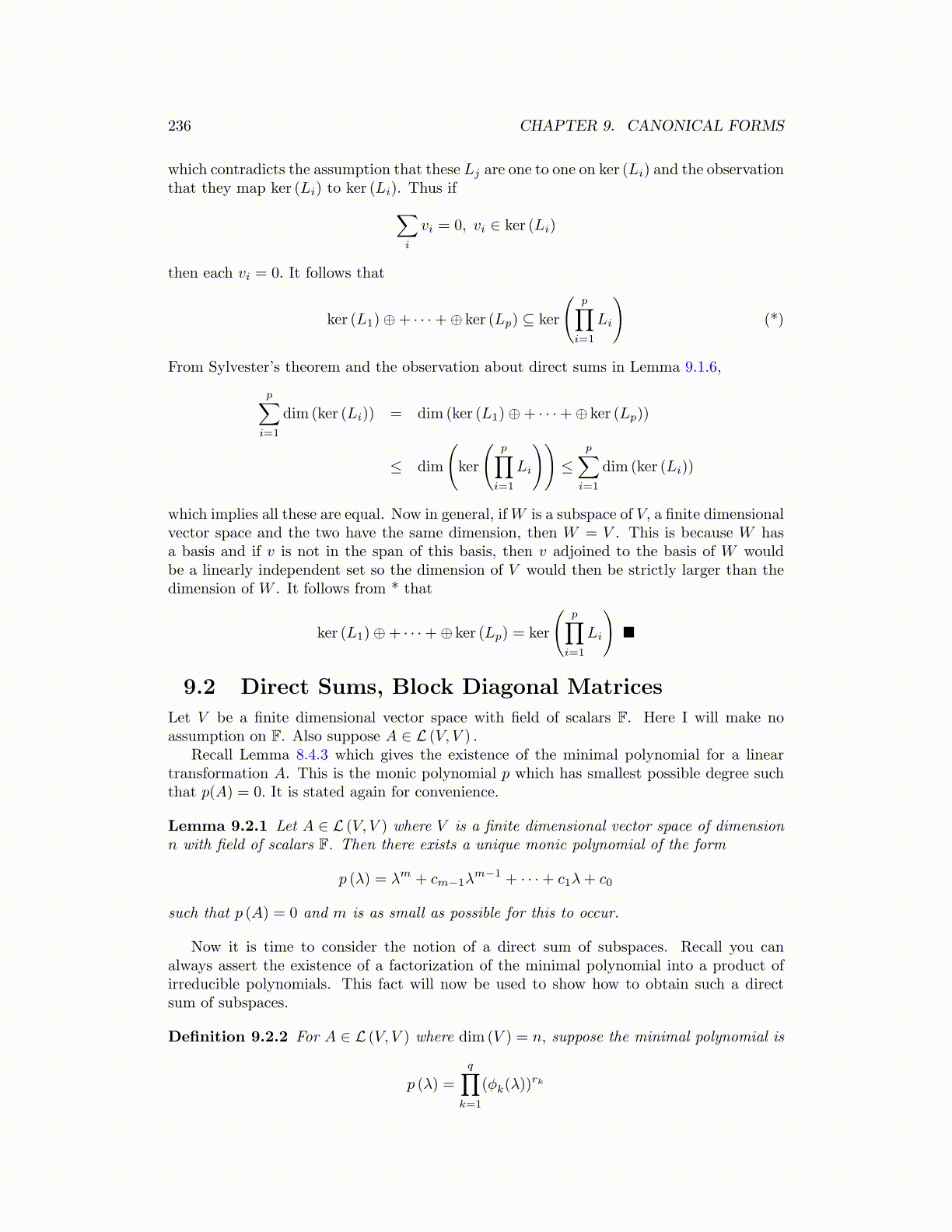
236 CHAPTER 9. CANONICAL FORMS
which contradicts the assumption that these Lj are one to one on ker (Li) and the observationthat they map ker (Li) to ker (Li). Thus if∑
i
vi = 0, vi ∈ ker (Li)
then each vi = 0. It follows that
ker (L1)⊕+ · · ·+⊕ ker (Lp) ⊆ ker
(p∏
i=1
Li
)(*)
From Sylvester’s theorem and the observation about direct sums in Lemma 9.1.6,
p∑i=1
dim (ker (Li)) = dim (ker (L1)⊕+ · · ·+⊕ ker (Lp))
≤ dim
(ker
(p∏
i=1
Li
))≤
p∑i=1
dim (ker (Li))
which implies all these are equal. Now in general, ifW is a subspace of V, a finite dimensionalvector space and the two have the same dimension, then W = V . This is because W hasa basis and if v is not in the span of this basis, then v adjoined to the basis of W wouldbe a linearly independent set so the dimension of V would then be strictly larger than thedimension of W . It follows from * that
ker (L1)⊕+ · · ·+⊕ ker (Lp) = ker
(p∏
i=1
Li
)■
9.2 Direct Sums, Block Diagonal Matrices
Let V be a finite dimensional vector space with field of scalars F. Here I will make noassumption on F. Also suppose A ∈ L (V, V ) .
Recall Lemma 8.4.3 which gives the existence of the minimal polynomial for a lineartransformation A. This is the monic polynomial p which has smallest possible degree suchthat p(A) = 0. It is stated again for convenience.
Lemma 9.2.1 Let A ∈ L (V, V ) where V is a finite dimensional vector space of dimensionn with field of scalars F. Then there exists a unique monic polynomial of the form
p (λ) = λm + cm−1λm−1 + · · ·+ c1λ+ c0
such that p (A) = 0 and m is as small as possible for this to occur.
Now it is time to consider the notion of a direct sum of subspaces. Recall you canalways assert the existence of a factorization of the minimal polynomial into a product ofirreducible polynomials. This fact will now be used to show how to obtain such a directsum of subspaces.
Definition 9.2.2 For A ∈ L (V, V ) where dim (V ) = n, suppose the minimal polynomial is
p (λ) =
q∏k=1
(ϕk(λ))rk